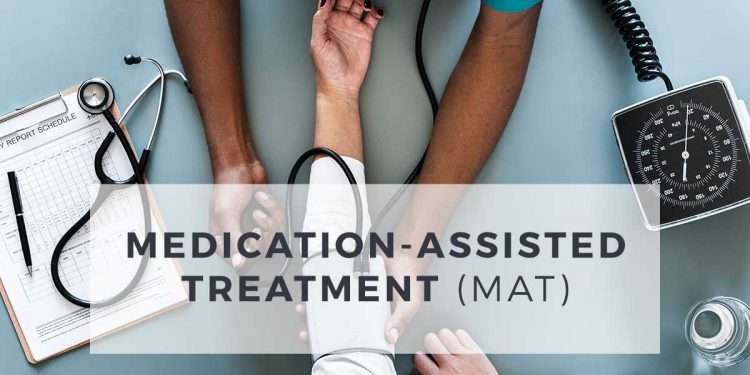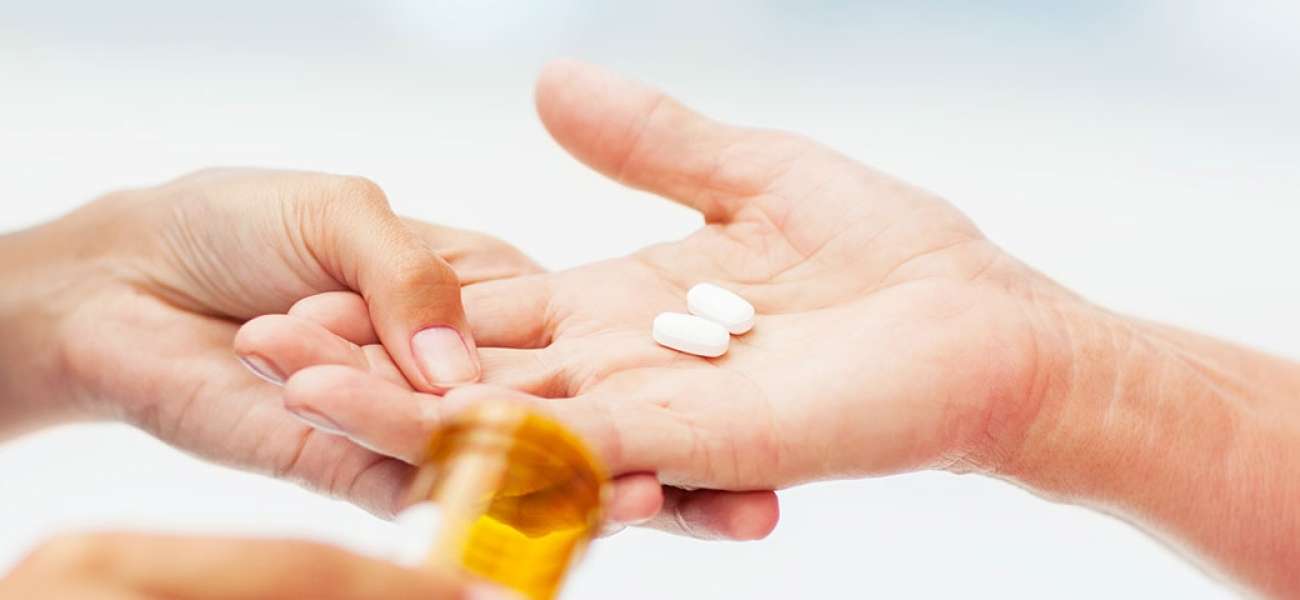Is Mat Right For You
Whether MAT is right for you will depend on your history of opioid use and attempts at recovery. For most people dealing with opioid use disorder, Medication for Addiction Treatment will be the right choice.
MAT will enable you to fully focus on recovery and building a life in sobriety since withdrawal symptoms and cravings will be controlled.
You donât have to live with uncontrolled opioid use disorder any longer. MAT can help you move toward a healthier, more balanced life.
Find Out How Peaks Recovery Can Help
Medical detox as well as medically-assisted treatments represent the first step in a long recovery journey. In both cases, during the initial days of your treatment, your body will get rid of the substances that you have been using.
This process is extremely delicate and can be emotionally and physically draining it should not be undertaken without the supervision of a specialist. At Peaks Recovery Centers, you will be surrounded by an experienced team of physicians, psychiatrists, and specialized nurses who can make your journey easier and more manageable. Get in touch today.
If you are interested in Peaks Recovery Centers for yourself or a loved one, please dont hesitate to call or fill out our form today.
Admissions Line
How Long Does It Last
MAT often addresses the acute withdrawal process. However, its length can vary. In some cases, MAT can be indefinite if the person has serious issues with relapse.
Most of the intense withdrawal symptoms from opioid medications resolve within a few weeks, after which the supervising physician can initiate a tapered dosing schedule for the medication. The decision to initiate a taperwith an MAT end-point in sightis based on the persons particular circumstances, the physicians judgment, and the input of the treatment team.
You May Like: How To Kick Food Addiction
Does Insurance Cover Mat
All insurance companies are different, so this is hard to answer.
At Ripple Ranch Recovery, we work with, and are in-network with, Christus Health Plan, Cigna, Magellan Health, BlueCross BlueShield, Aetna, and First Health Network.
If you do not see your insurance company listed, contact us to discuss further options.
Benefits Of Medication Assisted Treatment

Medication-assisted treatment is the practice of utilizing pharmaceutical medication alongside conventional treatment methods, such as behavioral therapy and counseling, to treat an addiction. For decades, MAT has helped those in treatment change their lives. It is often an indispensable part of the recovery process for those struggling with opioid or alcohol use disorders. Many aspects of addiction are so physiologically entrenched that attempts to change them through behavioral therapy alone often prove limited. The positive outcomes for recovery programs are significantly increased at a detox treatment center where prescription medications are integrated into therapy. Suboxone treatment, for example, can help those in treatment focus on therapy and counseling as this medication provides relief from withdrawal symptoms.
Lotus Recovery Centers uses MAT in many of the treatment plans that we offer. If you think a medication-assisted treatment center program may be the best choice for you, please dont hesitate to call us at for more information.
Don’t Miss: How Many People Get Addicted To Drugs
When To Use Medication
Proponents of MAT advocate for the beneficial effects of using medications to promote recovery. People in support of MAT are clear, however, that medications are only part of the treatment process.
MAT has been developed to provide a comprehensive approach to addiction treatment. Medications alone will do little to instill behavioral habits that are necessary for maintaining sobriety in the long-term. In fact, MAT researchers have found that people who take advantage of medications to stabilize their moods during withdrawal are more likely to participate and fully engage in behavioral therapies.
MAT is a good treatment option for people who are ready to achieve a stable mindset, stop constantly thinking about alcohol, experience fewer cravings to consume alcohol, and move forward with counseling and behavioral therapy. If you are ready to safely quit drinking and do not want to run the risk of experiencing dangerous withdrawal symptoms, MAT can help.
The drugs used in MAT cannot guarantee that you will achieve and maintain sobriety, but they can greatly assist you in the recovery process. Though MAT services are generally underused, they present an effective approach to alcohol addiction treatment that may just work for you.
What The Future Holds For Medication
MAT has become more widely accepted and thoroughly regulated only recently. For instance, federal law requires patients who receive medication through an opioid treatment pogram to also undergo counseling.
As new medications are developed, stronger data reaffirms or reveals best practices for policy, and more attention and funding are directed toward Americas opioid crisis , MAT should be expected to become a more prominent part of the solution. The skepticism and stigma surrounding MAT have begun to lift, gradually, as programs across the country help to transform lives and communities.
MAT alone wont end the drug epidemic, but its a vital component of an intelligent, compassionate and evolving approach to substance use disorder treatment.
Read Also: Can You Be Addicted To Orgasms
What Drugs Can Help You Treat Alcohol Addiction
Medications are not required for effective treatment for alcohol addiction, but they can help the process be more manageable and effective. Medications have been developed to help people reduce or completely stop their alcohol intake without struggling with the range of withdrawal symptoms that can present themselves.
Medications are not the only aspect of comprehensive addiction treatment, but they can be the catalyst that helps people make significant changes in the direction of sober living. Drugs approved specifically for the treatment of alcohol use disorder can provide enough relief from the addiction that psychological changes that are necessary for long-term recovery can begin.
Cons Of Mat For Heroin Addiction
While MAT is a beneficial form of treatment for many individuals living with heroin addiction. This type of treatment does have its fair share of drawbacks as well, largely dependent on the needs of patients.
The cons of using MAT for heroin addiction include:
- Ingesting potent medications that can have side effects
- Consistent medical supervision
- Potential for misuse or abuse of medications
- Potential to trade one addiction for another.
MAT may work for many of the people living with a heroin addiction, but that does not mean it will work for everyone. A person should not seek MAT if they are uncomfortable taking medications that may have unwanted side effects. They should also not seek MAT if they do not want to be under constant medical supervision.
Read Also: How To Become An Addiction Counselor
Side Effects Of Mat Drugs
Each drug used in MAT is different, and side effects vary from drug to drug, but there are a few commonly experienced side effects. Additionally, every person will tolerate each drug in their own way. While disulfiram encourages abstinence, it can cause drowsiness, headaches, and leave a metallic taste in your mouth. Naltrexones most common side effect is nausea. Acamprosates most common side effect, on the other hand, is diarrhea. Any signs of severe side effects after taking any one of these three drugs, such as anxiety, depression, suicidal thoughts, excessive tiredness, vomiting, hallucinations, blurred vision, and confusion, should be assessed by a medical professional immediately. Each medication comes with its own set of warnings and can potentially interact with other medications you may be taking. To avoid complications associated with these drugs, it is important to avoid drinking alcohol and speak with your doctor about medications you are already on.
Do The Mat Medications Cure Me
Medication alone is likely not enough to overcome opioid use disorder. Maintaining recovery in the long-term will require the help of therapists and others with similar experiences to discuss your journey with.
To reach long-term recovery, successful MAT programming must include the following:
- Medication
- Education
- Life-skills training
Without therapy and the other components listed above, it will be incredibly difficult to reach long-term recovery. Regardless, the drugs used in MAT are effective in stopping the symptoms of opioid withdrawal.
Also Check: How To Stop Being Addicted To Food
Alcohol Use Disorder Medications
Acamprosate, disulfiram, and naltrexone are the most common medications used to treat alcohol use disorder. They do not provide a cure for the disorder, but are most effective in people who participate in a MAT program. Learn more about the impact of alcohol misuse.
Learn more about MAT for alcohol use disorders and view Medication for the Treatment of Alcohol Use Disorder: A Brief Guide 2015.
How Does Mat Help With Opioid Addiction

People who have been abusing opioid drugs and abruptly stop will experience withdrawal symptoms. The symptoms are so unpleasant that many people start taking the drugs again. People in the midst of an opioid withdrawal syndrome will also experience extreme cravings to take their drug of choice.
MAT works to:2
- Reduce uncomfortable withdrawal symptoms using an opioid replacement medication. The medications help to lower the risk of relapse during the early stages of recovery.
- Address cravings for the drug in the early stages of recovery.
- Facilitate a slow, controlled taper of the drug so that the person can adjust to living without opioids.
- Provide medical supervision of the early stages of the persons recovery. Supervision can be extremely helpful in addressing triggers and potentially stressful situations that can increase the probability of relapse.
Recommended Reading: How To Control Addictive Personality
The Proven Benefits Of Medication
Medication-assisted treatment has a proven track record of success in recovery outcomes when compared to methods that do not include it. If your addiction is severe enough that a detox program is necessary, then a MAT program may be the best choice for you. Some of the key benefits that set medication-assisted treatment apart from other treatments are:
Relief from withdrawal symptoms is one of the biggest reasons why MAT programs are so effective. Without the pain or discomfort of going through detox, individuals are more likely to remain in a treatment program long enough for it to be effective. And by reducing the potential for relapse and overdose, medications make the road to recovery much safer.
When used as part of an integrated treatment plan that includes counseling and therapy, medications can help people to get their lives back on track. Whether your treatment team prescribed Vivitrol to address alcohol addiction or Suboxone to help with opioid addiction, you can be assured that this form of treatment is backed by scientific evidence.
Mat Statistics Effectiveness & Goals
According to the 2019 National Survey on Drug Use and Health and the National Survey of Substance Abuse Treatment Services:5,6
- 5 million people aged 12 and older had an alcohol use disorder in 2019.
- 1. million of these people received some sort of substance abuse treatment for AUD.
- Out of these 1.1 million people, 228,000 received MAT for AUD.
- In addition, 2.5 million people received alcohol use treatment in 2019 .
- Out of these 2.5 million people, 286,000 received MAT for alcohol use.
- Out of 2.3 million people aged 12 and older who received treatment for illicit drug abuse in 2019, 664,000 people received MAT for opioid abuse.
- Out of 1.6 million people aged 12 and older with an OUD, 294,000 received MAT.
- 408,550 people received methadone treatment in OTPs in a single-day count in March 2019.
- 168,428 people received buprenorphine treatment in OTPs in a single-day count in March 2019.
According to the Substance Abuse and Mental Health Services Administration , MAT has been proven to be effective in clinical studies and has been shown to significantly decrease the need for inpatient detox. By reducing the risk of relapse, MAT for opioid use disorder may also lower the risk of contracting HIV or hepatitis C.1
Recommended Reading: How To Help Someone Addicted To Meth
What The Research Shows On Mat And Alcohol
Research shows that few people can access Medication-Assisted Treatment in Federal guidelines recommend using MAT for people with alcohol use disorder. However, traditionally 12-step programs like AA have viewed this treatment as cheating. While perceptions have begun to change, many people in the addiction industry still feel like the medication is taboo.
In research compiled by JAMA Psychiatry, Beth Han, MD, Ph.D., MPH, of the NIHs National Institute on Drug Abuse discovered that MAT treatment rates for alcohol use disorder were only 7.6% in 2019. In contrast, around 36% of people diagnosed with opioid use disorder in 2019 could access medication-assisted treatment.
Who Can Treat An Individual With Addiction Using Medication Assisted Treatment
Methadone used in the treatment of opioid addiction can be prescribed and dispensed only through a SAMHSA-certified OTP. Buprenorphine-containing drugs, such as Suboxone can be prescribed by physicians who obtain a waiver from the DEA after taking specified training in the use of these drugs. Naltrexone, oral or injectable, can be prescribed by any licensed physician.
Recommended Reading: How To Treat Drug Addicted Person
What Is Mat And What Does It Do
Medication-Assisted Treatment is an approach to treating Opioid Use Disorder as a chronic disease that focuses on stabilizing patients, reducing their symptoms, and helping them remain in recovery. These goals are achieved by taking medication on a regular basis that allows patients to function without misusing opioids. When dosed correctly, individuals on MAT will experience reduced withdrawal symptoms while also not getting high. Overall, MAT reduces the illicit use of opioids, reduces the chances of an overdose, and increases the likelihood someone will remain in treatment.
Buprenorphine Waiver Notification Of Intent
The NOI buprenorphine waiver application contains all the data items necessary to complete the processing of the buprenorphine waiver application. The NOI must contain information on the practitioners qualifying credentials and additional certifications. It must also confirm that the practitioner will not have more than the approved number of patients at any one time, regardless of the number of practice locations.
Practitioners who wish to apply for an initial waiver must upload their training certificate after completing the buprenorphine waiver application to show that they have completed the required training to prescribe and dispense buprenorphine.
The recent Practice Guidelines exempts eligible physicians, physician assistants, nurse practitioners, clinical nurse specialists, certified registered nurse anesthetists, and certified nurse midwives from the certification requirements related to training, counseling and other ancillary services under 21 U.S.C. § 823- of the Controlled Substances Act .
Practitioners utilizing this exemption are limited to treating no more than 30 patients at any one time . This exemption applies only to the prescription of Schedule III, IV, and V drugs or combinations of such drugs, covered under the CSA, such as buprenorphine.
Complete the Online Request for a New Waiver or Patient Limit Increase.
Read Also: How Long Does It Take To Get Addicted To Weed
What Medications Are Prescribed As Part Of Medication Assisted Treatment
Medications such as methadone, buprenorphine, naltrexone and naloxone could be prescribed in different situations and in a responsible manner to someone with an opioid addiction. These medications are used to manage dependence and addiction to short-acting opioids such as heroin, morphine, and codeine, as well as semi-synthetic opioids like oxycodone and hydrocodone.
Click here to read more about SMARTs approach to alcohol addiction.
Are There Drawbacks Associated With Mat

There are certainly benefits associated with MAT, but some people worry if there are drawbacks linked to these drugs. One potential drawback of MAT is the abuse or diversion of these medications. Some people may sell these drugs on the street, use them to get high, or take drugs for which they do not have a prescription.
While this is a concern, research shows that most people who misuse buprenorphine do so in order to manage their own withdrawal symptoms or to help them stop using other opioid drugs. In general, using buprenorphine to get high is less common. The potential for abuse and diversion of drugs used in MAT is possible, but on the whole, the benefits of these drugs outweigh the negatives, especially among people who use them as prescribed and are under the care of a physician.
Another drawback associated with MAT is that not everyone who needs this form of treatment is able to receive it. There is an overall lack of MAT services available, and most states are not able to treat everyone who is in need. Given that many people who misuse buprenorphine do so to manage withdrawal and stop using other drugs, it may be that making MAT more accessible would reduce unintended consequences like misuse and diversion of medications used to treat opioid addiction.
Recommended Reading: How To Stop Fast Food Addiction
What Are The Side Effects Of Heroin Use And Addiction
Heroin use and addiction can have a number of adverse side effects and unintended consequences. Whether consumed once or repeatedly, heroin can negatively impact a persons health and general well-being, causing problems with their relationships, finances, occupation, and more.
In the short-term, the side effects of heroin use include:
- Dry mouth
- Clouded mental functioning and judgment
- Going in and out of consciousness
Opioid Addiction: Medication Assisted Treatment
Medication assisted treatment with professional medical help is considered the gold standard. It uses medication to transition the patient and help with withdrawal symptoms. MAT may also integrate behavioral health.
Using medication to assist in the treatment of opioid addiction is common and preferred. It can improve a persons health and positively influence his or her participation in a rehabilitation program.1
There are 3 medications commonly used in MAT to transition patients off prescription opioids or more illicit substances like heroin and fentanyl.
You May Like: How Do People Get Addicted To Heroin
